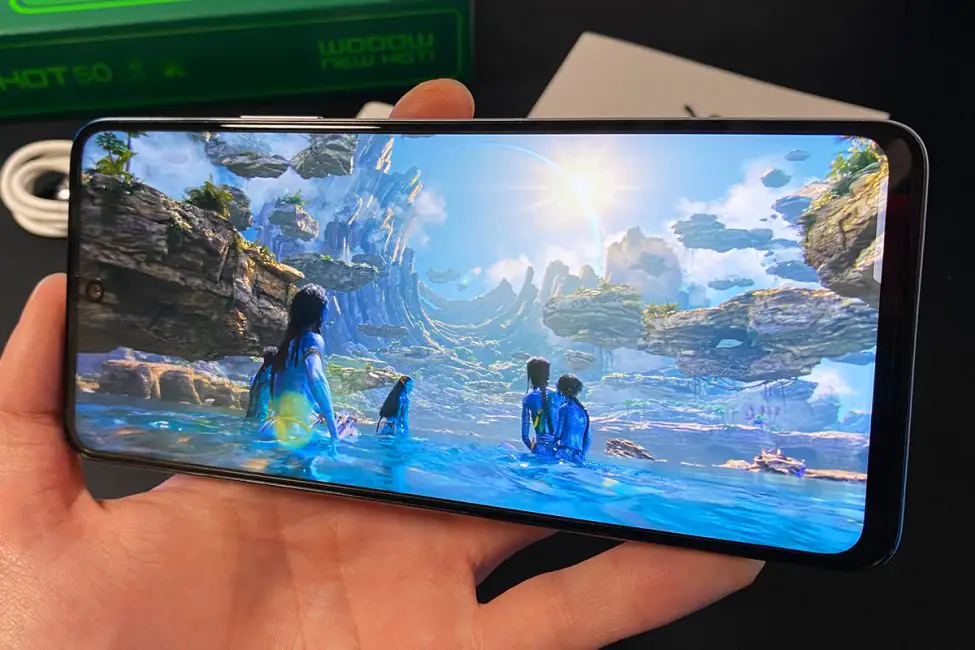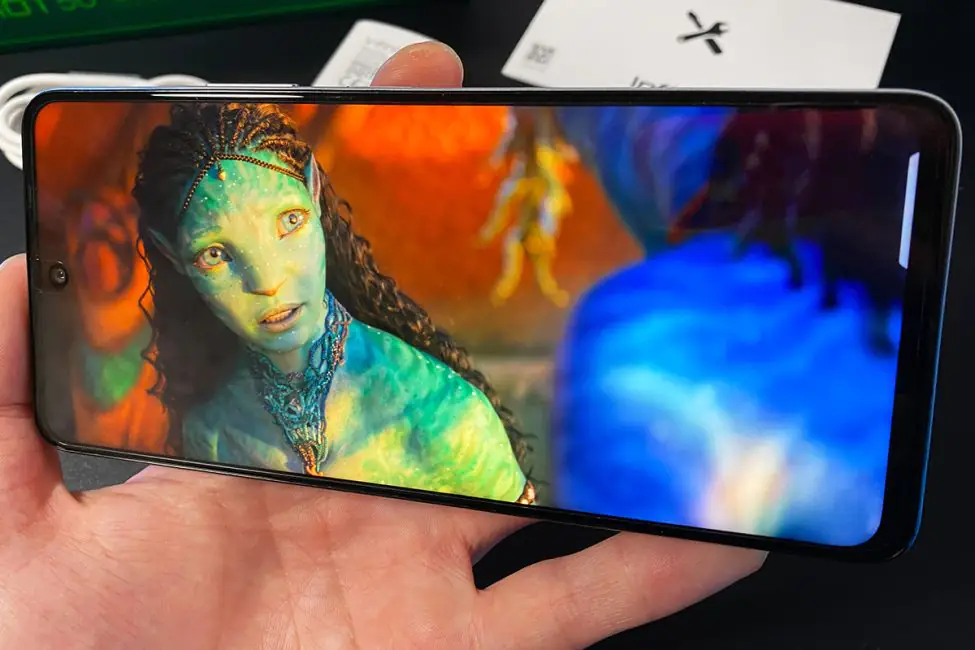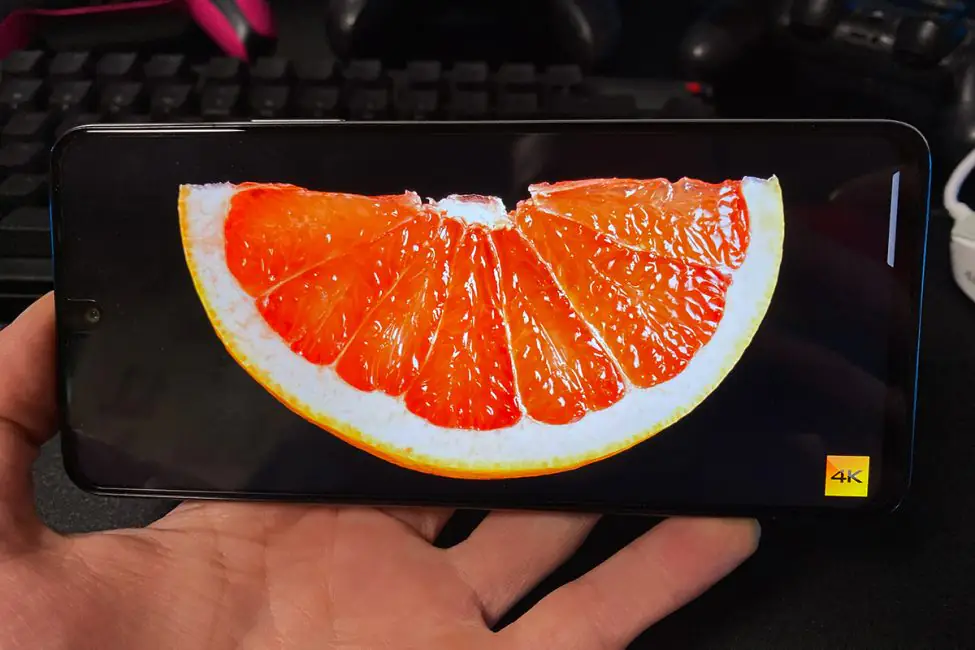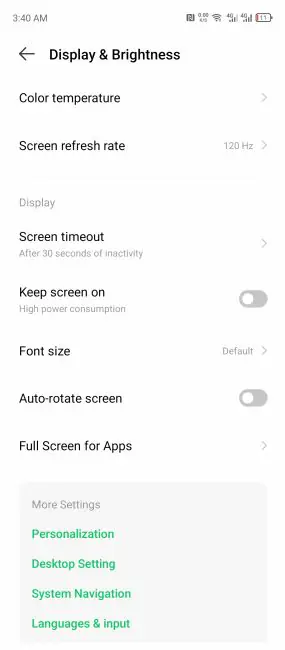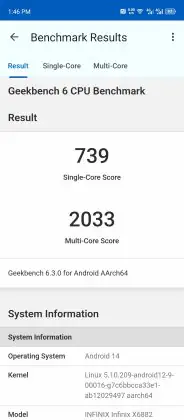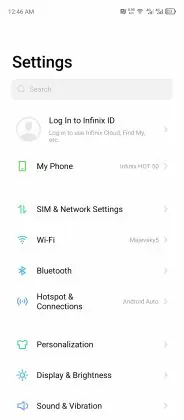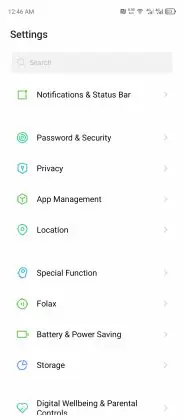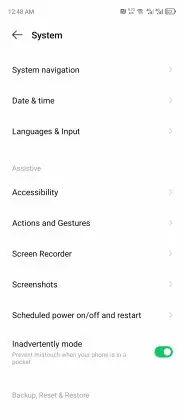© ROOT-NATION.com - Use of content is permitted with a backlink.
Infinix smartphones are notable for their affordability and decent technical specifications. Generally, Infinix devices can be confidently described as modern top choices for their price range. Specifically, the HOT series features budget-friendly mid-range smartphones with good hardware and unique designs. Today, I’m reviewing one of the latest additions to this lineup—the Infinix HOT 50. This model can be considered a sub-flagship in the fifth generation of HOT devices. It boasts a new octa-core Helio G100 processor, a large LTPS display with a 120 Hz refresh rate, decent cameras capable of recording 2K video, and Infinix AI for photo processing, among other features. All this is offered at an attractive price of just $165. For more details on what makes the new Infinix HOT 50 appealing, read on in the review.
Specifications
- Model: Infinix HOT 50
- Display: LTPS; 6.78″; 2460×1080 (FHD+); 396 PPI; 120 Hz; 800 nits; screen-to-body ratio 90.6%; touch discrimination frequency 240 Hz; color gamut 85% NTSC
- Processor: MediaTek Helio G100; 8 cores (2 Cortex-A76 2.2 GHz + 6 Cortex-A55 2 GHz cores); 6 nm process; Mali-G57 MC2 graphics
- RAM and storage: 8 GB LPDDR4X / 256 GB UFS 2.2
- Memory card support: microSD up to 2 TB
- Rear camera: 3 lenses; 50 megapixels (S5KJN1SQ03-FGX9, 1/2.76”, 6P lens, F/1.6, AF); video recording 2K@30FPS, 1080P@60/30FPS, 720P@30FPS
- Front camera: island camera (in the display); 8 megapixels (GC08A8, 1/4”, F/2.0, FF); video recording 2K@30FPS, 1080P@60/30FPS, 720P@30FPS
- Audio: one speaker on the bottom; support for DTS and Hi-Res Audio
- Battery: 5000 mAh; 18W fast charging
- Operating system: Android 14
- Shell: XOS 14.5
- Communication standards: 2G, 3G, 4G
- SIM card slot: triple (2 nano-SIM + 1 microSD)
- Wireless technologies: Wi-Fi 5 (802.11ac); Bluetooth 5.0; NFC
- Geolocation services: GPS, GLONASS, Galileo
- Sensors and sensors: light sensor (front and rear); proximity sensor; gyroscope (software); digital compass; fingerprint scanner (in the lock button)
- Connectors: USB-C 2.0; 3.5 mm mini-jack
- Body material: plastic
- Protection: IP54
- Dimensions: 167.88×75.63×7.70 mm
- Weight: 187 g
- Package contents: smartphone; case; 18 W charger; USB-A to USB-C cable; SIM tray eject tool; warranty documentation
Positioning and price
It’s worth noting that the 5th series smartphones are the latest models in the Infinix HOT lineup. This series consists of three devices: the Infinix HOT 50, Infinix HOT 50 Pro, and Infinix HOT 50i. The HOT 50 serves as the base model, while the Pro version offers enhancements such as an AMOLED display and faster charging capabilities. The 50i, as one might expect, is a simplified and more affordable option. In this review, I will focus solely on the base model, the HOT 50.
The current price of the smartphone is $165 / €150 for the 8/256 GB version. A model with a smaller storage capacity of 8/128 GB is available for $145 / €135. At first glance, the pricing positions this device squarely within the budget smartphone segment. However, when considering its specifications, the HOT 50 aligns more closely with entry-level to mid-range devices. Therefore, the Infinix HOT 50 can be succinctly described as a decent option that offers the performance of a mid-range device at a budget price.
Package contents
The smartphone is delivered in a small cardboard box with a “green” design characteristic of the HOT series. In addition to the smartphone itself, the package includes
- a silicone case
- 18 W charger
- USB-A to USB-C cable
- a paper clip for removing the SIM tray
- warranty documentation

It’s worth noting that a protective film is applied to the display straight out of the box. Therefore, it can be considered part of the package.

Design, ergonomics, build quality
The design of the Infinix HOT 50, like the other devices in the fifth series, is fairly distinctive. Infinix has moved away from the iPhone-like large round camera setups, opting instead for neat square camera modules with rounded corners. They refer to this design as the “wooow cube.” Additionally, the smartphone is slightly lighter and slimmer compared to its predecessor, the HOT 40. There is a range of color options available for the body, with the smartphone coming in four variants: gray, purple, green, and black.

The front panel of the Infinix HOT 50 features a 6.78-inch display that occupies nearly the entire surface. The bezels are minimal, measuring 4 mm on the sides and 5 mm at the top and bottom. The front camera is designed as a small dot located at the top of the screen. As mentioned earlier, the display comes with a protective film applied right out of the box.
The back panel of the Infinix HOT 50 is made of plastic. The surface material has a slightly textured feel, which contributes to a generally pleasant touch experience. The cameras are designed in what Infinix refers to as the “wooow cube” style.
The side edges of the Infinix HOT 50 are perfectly flat, a design choice typical of most modern smartphones, with slightly rounded corners. The material used for the side inserts is designed to mimic metal. At just 7.7 mm thick, the smartphone is quite slim, to the point that it struggles to stand upright on a flat surface without support.
The placement of elements on the Infinix HOT 50 is quite standard. On the left side, you’ll find the SIM card tray. The right side houses the volume control and the power button. There are no features on the top edge. Meanwhile, the bottom edge includes a USB-C 2.0 port, a 3.5 mm audio jack, and speaker holes, adhering to common design conventions.
The SIM tray on the Infinix HOT 50 is a triple-slot design, allowing users to install two nanoSIM cards and one microSD card with a capacity of up to 2 TB simultaneously.

The Infinix HOT 50 measures 167.88 x 75.63 x 7.70 mm and weighs just 187 g. The new model has been designed to be lighter and thinner compared to its predecessor, the HOT 40, while maintaining the same 6.78-inch display size. This objective has been successfully achieved.

The build quality of the Infinix HOT 50 is excellent, giving the impression of a sturdy, monolithic construction. The device is also rated with an IP54 protection class, meaning it can withstand dust and light splashes of water.
In terms of ergonomics, the smartphone feels comfortable to hold. The materials used in the casing are pleasant to the touch. Users can easily reach the volume controls, power button, and the upper portion of the screen with their thumb. However, accessing the very top of the display requires a slight repositioning of the grip due to the phone’s elongated design. Nonetheless, the device is well-suited for scrolling through social media feeds, and watching videos is a pleasant experience.
The only ergonomic complaint I have after using the device is related to the power button. It is significantly recessed into the body compared to the volume controls, making it somewhat difficult to locate by touch quickly. Additionally, this design choice slightly diminishes the tactile feedback when pressing the button. Other than that, the Infinix HOT 50 excels in design, build quality, and overall ergonomics.
Read also:
- Infinix GT 20 Pro Gaming Smartphone Review
- Infinix Smart 8 smartphone Review: $90 and that says it all!
Display
The smartphone features a 6.78-inch LTPS display with a resolution of 2460×1080 (FHD+) and a maximum refresh rate of 120 Hz. The pixel density is 396 PPI, and the claimed brightness reaches 800 nits. The screen-to-body ratio is 90.6%, while the touch sampling rate is 240 Hz. The reported color coverage is 85% NTSC.

One of the standout features of the HOT 50’s display is its brightness, which is immediately noticeable upon powering on the device. The screen is vibrant and colorful, particularly at maximum brightness. This high level of brightness ensures that using the device outdoors won’t pose any significant issues, except perhaps in direct sunlight.
The color reproduction on the HOT 50 is commendable, with bright and moderately saturated colors. While the contrast is generally acceptable, there are instances where it might fall slightly short. However, the black levels are deep and visually appealing. Overall, the display delivers a vibrant image, even though it lacks HDR support, as one might expect at this price point.
The viewing angles are excellent, with the display maintaining clear visibility from a wide range of angles. There is no noticeable distortion in brightness, contrast, or color, ensuring that the screen remains easily readable regardless of how it is viewed.

The clarity of the display is also impressive. With a pixel density of 396 PPI, the 2460×1080 resolution ensures that images and text appear sharp and well-defined on the smartphone.
The display also deserves praise for its responsiveness and performance. It offers a fast and smooth experience, particularly at the 120 Hz refresh rate, and accurately registers all actions, including taps, swipes, and touches. However, the touchscreen recognizes only five simultaneous touches, which might be limiting for some users. While this is adequate for typical tasks, it could fall short for mobile gaming. That said, based on my experience, five touches are usually sufficient for comfortable gameplay.

The display settings are fairly standard, offering options such as light and dark themes, auto-brightness, color temperature adjustments, and refresh rate options. Users can choose from four refresh rate settings: 60 Hz, 90 Hz, 120 Hz, and a dynamic refresh rate that adjusts based on the content being displayed.
The smartphone supports Always On Display (AOD), a feature that allows it to show limited information on the screen while in sleep mode. Users can display a clock, text, an image, the battery percentage, or a combination of these elements on the inactive screen.
The personalization settings offer a variety of options. Users can access downloadable themes, animated wallpapers, and an AI wallpaper generator that creates backgrounds based on images and text.
In summary, the Infinix HOT 50 features a commendable display, especially considering its overall price. However, for those who prefer an AMOLED screen, it’s worth noting that for an additional $29 / €26, you can opt for the enhanced version, the Infinix HOT 50 Pro. This model essentially offers the same smartphone experience but includes an AMOLED display and faster charging capabilities.
Hardware and performance tests
The Infinix HOT 50 is powered by the new MediaTek Helio G100 processor, which was released this year. It features a configuration of 2 Cortex-A76 cores clocked at 2.2 GHz and 6 Cortex-A55 cores operating at 2.0 GHz, built on a 6nm process technology. For graphics processing, it uses the Mali-G57 MC2 GPU.
The Infinix HOT 50 comes equipped with LPDDR4X RAM and UFS 2.2 storage. There are currently two versions of the smartphone available, differing in storage capacity: 8/128 GB and 8/256 GB. Although the official Infinix website mentions models with 6 GB of RAM, these are not found in Ukrainian stores, suggesting that they might be intended for other regions. Notably, the smartphone also supports virtual memory expansion, which utilizes storage space to enhance RAM, with options for additional 3 GB, 5 GB, or 8 GB of virtual memory.
In benchmark and performance tests, the Infinix HOT 50 delivers expected results, as demonstrated in the following data. The tests conducted include Geekbench 6, PCMark, 3DMark, AnTuTu, AiTuTu, and CPU Throttling Test. Here are the results:
What I can say about the personal experience with the smartphone’s performance is that it is quite good. The device feels responsive: there are no lags, freezes, or slowdowns. I encountered no issues with the operating system, apps, web browsing, video playback, or while working with the camera. In a nutshell, using the Infinix HOT 50 is comfortable and pleasant.

The smartphone also handles mobile games quite well. There’s even a dedicated app for gaming called XArena. This serves as a sort of gaming hub where all installed games are gathered, along with relevant settings for optimization. It offers options for graphics enhancement, performance modes, system summaries, and more.
Now, a few words about the games themselves. Asphalt Legends Unite runs perfectly on maximum graphics settings (High Quality + Frame Rate 60). Diablo Immortal can also be comfortably played on max settings (30 FPS, Medium Resolution, Very High Graphics). Free Fire MAX initially suggested playing on Ultra, but I set everything to MAX, and it turned out the smartphone handles it without any issues. However, in Genshin Impact, you can only play comfortably at minimum settings (Lowest, 60 FPS). When switching to higher graphics levels, performance noticeably drops.
From all this, it can be concluded that the smartphone handles most games without any issues, providing a comfortable level of performance. For more demanding titles, you can always lower the graphics settings to low or even the minimum.
Read also:
- Infinix HOT 30i smartphone review: the smart choice
- Infinix NOTE 30 Pro review: The perfect mid-ranger from an ambitious brand
Cameras
The smartphone features a triple rear camera setup, consisting of a main module, a depth sensor, and an auxiliary lens. The main lens has a resolution of 50 MP and a wide aperture of F/1.6. The front camera comes with an 8 MP resolution and an aperture of F/2.0. Both cameras can record video at resolutions of 2K@30FPS, 1080P@60/30FPS, and 720P@30FPS.

The camera app is quite feature-rich, offering a variety of modes for both photo and video capture, numerous filters, and cosmetic enhancements, along with avatar options and HDR support. The available shooting modes include: standard photo, high-resolution photo (50 MP), portrait, super night mode, pro mode, sky replacement photo, panorama, document scanning, and cartoon avatar creation.
For video recording, the app provides options for standard video, movies, slow motion, dual video, and short video modes.
There is no macro mode, but considering the current trend where even mid-range smartphones include mediocre macro capabilities that often go unused, this might be for the best. Overall, the set of modes available is excellent, and the camera app itself performs well. Additionally, photos can be edited in the gallery using Infinix AI’s built-in features. Besides the standard editing tools, there are also interesting functions like object removal and cropping, which enhance the editing experience.
As for the quality of the photos taken, it is quite commendable for a budget smartphone. In good lighting conditions, the photos showcase decent object detail. Subjects in the foreground stand out well, while the background is nicely blurred. The colors are, in my opinion, excellent—though they may appear somewhat unnatural at times, they are still aesthetically pleasing. However, there can occasionally be minor issues with brightness and contrast. Some photos might turn out with unnaturally high brightness, resulting in overexposure. Nevertheless, taking a few shots of the same scene can yield significantly better results.
The smartphone’s cameras can capture images with HDR in both the standard photo mode and the maximum resolution of 50 MP. Regarding HDR, it’s worth noting that the difference is hardly noticeable in some photos, while in others, it does enhance the contrast and make the colors a bit more vibrant.
Photos taken in the 50 MP mode will have a higher resolution and greater detail. This may not be immediately noticeable in the preview, but upon closer inspection, the difference can be observed, albeit slight. Ultimately, this depends on what you are photographing and the conditions in which you’re shooting. To ensure the best quality for 50 MP shots, it’s essential to keep the smartphone as steady as possible. Ideally, you should rest it on something stable or use a tripod. Otherwise, the images may come out slightly blurred, resulting in lower quality compared to those taken in standard photo mode.
In general, it can be said that during the day or in sufficient lighting, the smartphone’s main camera performs excellently. To illustrate this, I will attach a few examples: a standard photo, a standard photo with HDR, and a photo taken in maximum resolution at 50 MP. Lastly, I’ll include a few examples from the “Sky Master” mode.
In the evening or in low-light conditions, the detail in the shots understandably decreases. You can also observe noise and blurriness in the photos. Such quality in low-light conditions is quite typical for budget smartphones. Therefore, I don’t see the point in highlighting this aspect as a significant drawback, nor do I want to be overly critical. There is a special Super Night mode for evening shooting. In some cases, it can add a bit of brightness to the shots, but in most cases, the difference is minimal. By the way, in low-light situations, the camera automatically suggests turning on this mode.
The main camera of the smartphone performs well with video recording. During the day, the videos are of good quality and have decent detail, which is quite expected. However, what I didn’t anticipate was the decent performance in night shooting. Typically, budget smartphones struggle with low-light video recording; in fact, some entry-level to mid-range phones don’t manage night shooting very well at all. In the case of the Infinix HOT 50, the situation is much better. Yes, there is noise in the video, and the detail is not as good as in daylight. However, compared to other budget smartphones I’ve reviewed, I can confidently say that the Infinix excels in night shooting. The only drawback I would note is the lack of stabilization, but that was also expected.
Infinix HOT 50 2K@30FPS

Infinix HOT 50 1080P@60FPS

Infinix HOT 50 2K@30FPS

Infinix HOT 50 1080@60FPS

Shooting with the front camera was also impressive. Photos taken in good lighting conditions turn out great. In low light, similar to the main camera, the detail does drop. However, I can’t say the evening photos are bad—it’s quite a decent level for a budget smartphone.
The video quality from the front camera mirrors that of the photos. One point to note is that evening or nighttime videos at 60 FPS appear quite dark. It’s better to shoot them in 30 FPS at either 2K or 1080P. I’ve encountered similar issues with low brightness at 60 FPS on other smartphones as well, including devices that are more expensive than the Infinix HOT 50. Overall, I don’t see much reason to criticize it here either.
Infinix HOT 50 Front Camera 2K@30FPS
Infinix HOT 50 Front Camera 1080P@60FPS
Infinix HOT 50 Front Camera 2K@30FPS
Infinix HOT 50 Front Camera 1080P@60FPS
Sound
The Infinix HOT 50 features a single speaker located at the bottom of the device, along with support for DTS and Hi-RES Audio. It’s a bit surprising that this model has only one speaker, considering the previous version had dual speakers positioned at the top and bottom. As for sound quality, it can be described as simply budget-level. The audio is flat, with minimal bass, and can suffer from distortion issues at maximum volume. For music listening, one speaker is definitely insufficient. However, it is adequate for watching YouTube or a movie at moderate volume levels.

You can attempt to improve the audio experience using DTS and the equalizer available in the sound settings. However, I must emphasize that this won’t drastically change the overall sound quality. To reiterate, the audio remains firmly in the budget category.
One positive aspect is that the smartphone is quite loud overall. You will definitely hear an important call and won’t miss it. Regarding call quality and clarity during conversations, there’s really nothing to complain about. You can hear your conversation partner quite well, and they can hear you just as clearly.
The smartphone can connect to wired headsets thanks to the standard 3.5 mm audio jack located on the bottom edge. When connecting a decent wireless headset, I found that the smartphone supports LDAC codecs. The sound quality from connected devices is satisfactory, as any issues here depend more on your devices than on the smartphone itself.

Read also:
Communications and wireless technologies
The smartphone supports dual nano-SIM cards and features a triple SIM slot, allowing you to also install a microSD card of up to 2 TB without sacrificing a SIM card slot. As for supported network technologies, it covers the standard 2G, 3G, and 4G (LTE) bands. The supported frequency bands are as follows:
- 2G: B2|3|5|8
- 3G: B1|2|4|5|8
- 4G: B1|2|3|4|5|7|8|20|28A|28B|38|41(120M)|40
As expected, there is no support for eSIM, nor for 5G. However, it is possible that 5G support may be added in a future updated model of the smartphone.

While I had the smartphone on test, I used it as my primary phone for calls, mobile internet, and so on. I can say that I experienced no issues with connectivity or internet throughout the entire period. The signal is stable, with 4G available on both SIM cards, and the mobile internet speed was normal. Essentially, everything works as it should.
For wireless connectivity, the Infinix HOT 50 features a basic set of options — Wi-Fi 5, Bluetooth 5.0, and NFC for contactless payments. The geolocation services are standard as well, including GPS, GLONASS, and Galileo. All of the above functions, like connectivity, work flawlessly. Networks are found and connected quickly, wireless devices pair without issues, and location is accurately determined. Overall, everything is in perfect order in this regard.

XOS software and shell
The Infinix HOT 50 runs on Android 14 with its custom XOS 14.5 interface. To summarize the interface: if you’re familiar with MIUI from Xiaomi or HiOS from Tecno, you’ll find XOS quite similar. They share some design and navigation elements, so even if it’s your first experience with this smartphone, you’ll likely feel comfortable navigating and finding the necessary settings. The interface itself is quite good: it operates smoothly, appears to have no bugs, is intuitive, visually appealing, and offers customization options along with fun features like widgets and sidebars.
The Infinix HOT 50 comes with a wide range of pre-installed applications, including the standard Google suite, proprietary apps from Infinix, and a few third-party apps like Facebook and Instagram. Fortunately, you can easily uninstall any unnecessary apps if you wish. Notably, I didn’t encounter any intrusive notifications from the pre-installed apps, which is a significant plus.
One interesting feature of the Infinix HOT 50 is Infinix AI, which includes the virtual assistant Folax. Folax can assist with text, voice, and image processing, as well as answer various questions. Additionally, Infinix AI’s algorithms allow you to edit photos, such as removing or cropping objects. You can also create fun wallpapers from your own photos or based on specified text, adding a creative touch to your device.
Navigation in the system is standard, utilizing either gestures or three buttons. The methods for locking the device are also familiar: a graphical key, password, PIN code, fingerprint, and facial recognition.
Battery life
The smartphone is equipped with a 5000 mAh battery and comes with an 18W charger. Using the provided charger, the device charges from 4% to 50% in 37 minutes. A full charge to 100% takes 1 hour and 37 minutes. Additionally, it’s worth noting that the device supports pass-through charging, which may help extend the battery’s lifespan over time.
I attempted to conduct a battery life test using the built-in Work 3.0 Battery Life benchmark from PCMark. However, both times the test ended without displaying any results. This issue likely stems from the application itself rather than the smartphone, as this isn’t the first device where the test has failed to run properly. Keeping this in mind, I noted the start time and an approximate end time for the test, so I could calculate the results myself if needed.
- 04:00 – test started, battery charge is 100%
- 14:00 – the test stopped with an error, battery charge is 10%
In summary, the test yielded about 10 hours of continuous active stress testing, which is comparable to the previous model, the Infinix HOT 40, that achieved 11 hours and 22 minutes. Keep in mind that these numbers are not 100% accurate. For reference, the test was conducted with the display brightness set to around 75% and a fixed refresh rate of 120Hz.
From my own experience, the battery life of the Infinix HOT 50 is decent. Under typical daily use, the smartphone can last from one to one and a half to two days on a single charge, depending on how intensively the device is used.
Conclusions
In conclusion, the Infinix HOT 50 can be considered a modern top-tier option for its price. It stands out as a solid mid-range device at a budget-friendly cost of $165, offering a large 120Hz display, good performance, decent cameras, and reasonable battery life. Additionally, it features a stylish design that sets it apart from more common options.
The sound quality is budget-level, but if you’re not too picky, it should suffice. The only notable drawback I would highlight is the power button, which is poorly designed. It’s deeply recessed, making it difficult to press quickly. Other than that, the device is quite impressive.

Read also:
- Samsung Galaxy S24 FE Smartphone Review
- Weapons of Ukrainian Victory: LAV 6.0 ACSV Armored Personnel Carrier
- 10 Examples of the Strangest Uses of AI


























